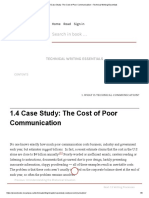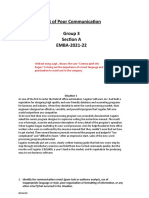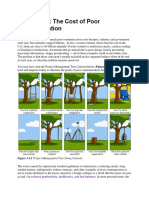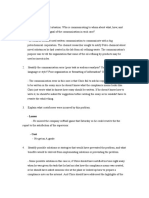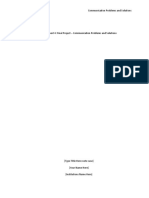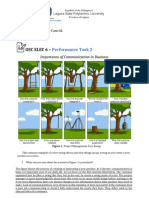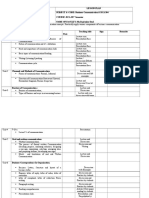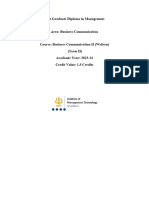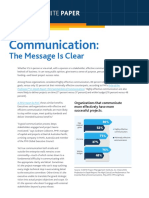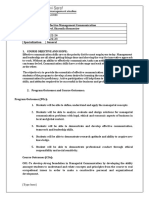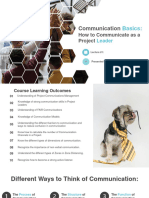0% found this document useful (0 votes)
147 views2 pagesIn-Class Assignment 2
The document discusses poor communication in business and its costs. It introduces a project management cartoon depicting communication errors and asks students to analyze examples of each error by defining the situation, identifying the error, explaining costs incurred, and identifying preventative solutions and benefits.
Uploaded by
incorrectpass10Copyright
© © All Rights Reserved
We take content rights seriously. If you suspect this is your content, claim it here.
Available Formats
Download as DOCX, PDF, TXT or read online on Scribd
0% found this document useful (0 votes)
147 views2 pagesIn-Class Assignment 2
The document discusses poor communication in business and its costs. It introduces a project management cartoon depicting communication errors and asks students to analyze examples of each error by defining the situation, identifying the error, explaining costs incurred, and identifying preventative solutions and benefits.
Uploaded by
incorrectpass10Copyright
© © All Rights Reserved
We take content rights seriously. If you suspect this is your content, claim it here.
Available Formats
Download as DOCX, PDF, TXT or read online on Scribd
/ 2



